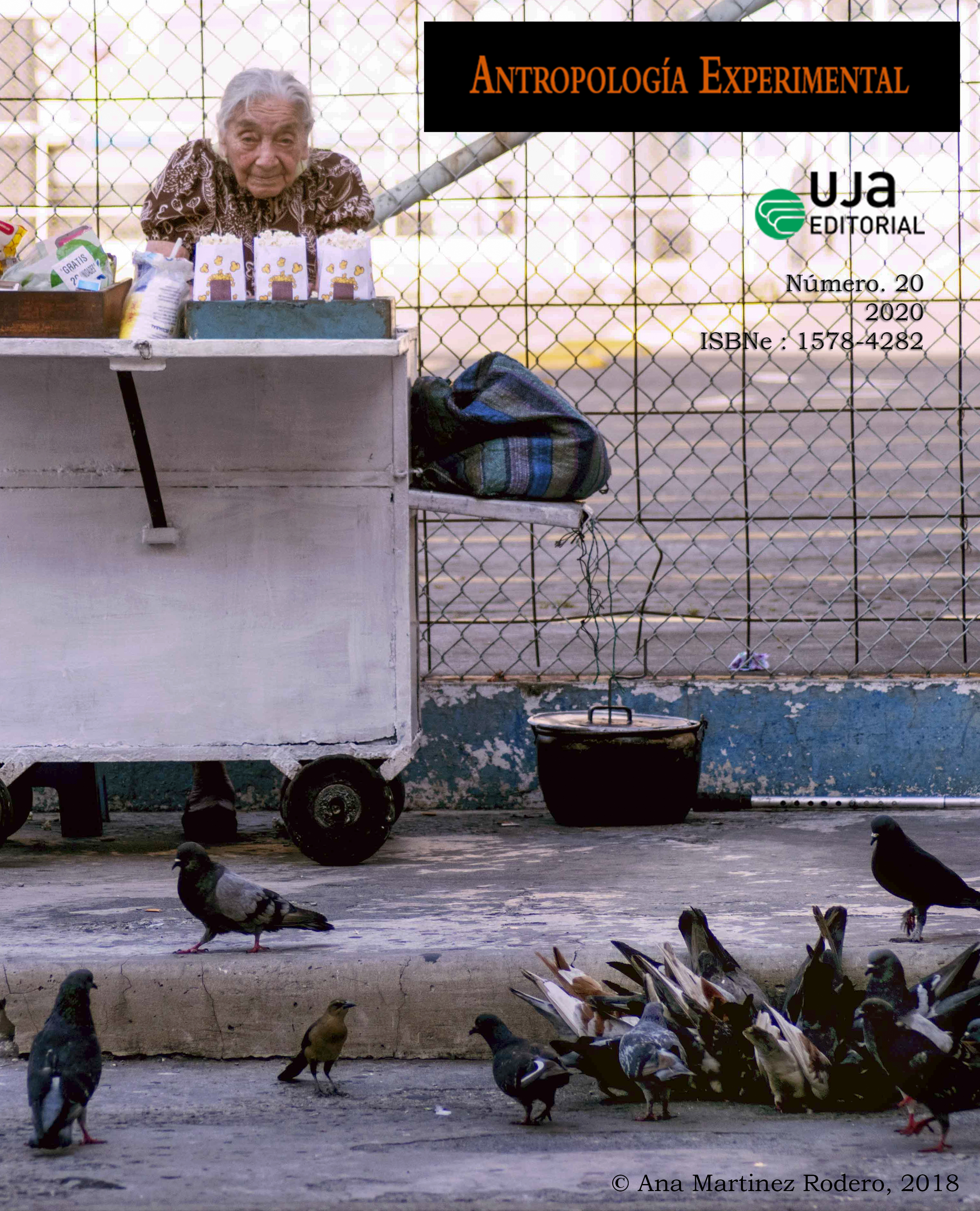Relationship between parents’ input and competence of using number and numeral classifiers in Totonac
DOI:
https://doi.org/10.17561/rae.v20.10Keywords:
Linguistic Competence, Totanac Language, Sociolinguistic, Bilingualism, AcquisitionAbstract
Here we introduce an empirical research applied to 1,078 young Totonac students from Filomeno Mata, Veracruz. This research aims for statistical relationship between the language with which the parents talk to their children and the competence of using number and numeral classifier in Totonac. The analysis shows there is a significant association, and so the degree of competence on using these lexical elements, mainly depends on whether the parents prefer speak Totonac to their children rather than Spanish. In addition, nowadays it shows the mother who speaks Totonac ensures a proper usage of numeral classifiers against the trend of their disuse or reduction due to a growing usage of Spanish into the family.
Downloads
References
Barriga Villanueva, R. (2004-2005). Los estudios de lenguaje infantil en México. Una vuelta de tuerca en el ámbito de la adquisición. Revista Latina de Pensamiento y Lenguaje, 13 (1), 1-26.
Beck, D. y Lam, Y. (2008). Language loss and linguist suicide: A case study from the Sierra Norte de Puebla. En: B. J. Sarah Cummins y P. A. Shaw (Eds.). All the Things You Are: A Festschrift for Jack Chambers. Toronto Working Papers in Linguistics (pp. 5-16). Toronto: Universidad de Toronto. Recuperado de https://sites.ualberta.ca/~dbeck/Chambers.pdf
De León Pasquel, L. (Coord.) (2013). Nuevos senderos en el estudio de la adquisición de lenguas mesoamericanas. Estructura, narrativa y socialización. México: CIESAS.
Ferguson, Ch. A. (1984). Diglosia. En: Garvin: I. y Lastra, Y. (Eds.). Antología de estudios de etnolingüística y sociolingüística (pp. 247-265). México: UNAM.
Fernández Díaz, M. J.; García Ramos, J. M.; Asensio Muñoz, I. & Carballo Santaolalla, R. (2011). Problemas de estadística aplicada a la educación. Madrid: Editorial Síntesis.
Gleitman, L. R., Newport, E. L. & Gleitman, H. (1984) The current status of the motherese hypothesis. Journal of Child Language. Cambridge; Cambridge University Press, 11 (1), 43-79. https://doi.org/10.1017/S0305000900005584
Guy, G. (1993). The quantitative analysis of linguistic variation. En: Preston, D. R. (Ed.). American Dialect Research (pp. 223-249). Amsterdam / Filadelfia: John Benjamins. https://doi.org/10.1075/z.68.11guy
Hernández Campoy, J. M. & Almeida, M. (2005). Metodología de la investigación sociolingüística. Málaga: Editorial Comares.
Kerlinger, F. N. y Lee, H. B. (2002). Investigación del Comportamiento. Métodos de Investigación en Ciencias Sociales. México: McGraw Hill.
Labov, W. (1982). Building on empirical foundations. En: Lehmann, W. P. y Malkiel, Y. (Ed.), Directions for Historical Linguistics (pp. 17-92). Amsterdam: John Benjamins.
Lam, Y. (2012). Oportunidad, ideología y la pérdida del totonaco del Río Necaxa. In: Levy: y Beck, D. (Eds.). Las lenguas totonacas y tepehuas: textos y otros materiales para su estudio (pp. 519-543). México: UNAM.
Lamb, M. E. (Ed.). (1997) The role of the father in child development. New York: Wiley.
Locke, J. L. (2001). First communion: The emergence of vocal relationships. Social Development, 10, 294-308. https://doi.org/10.1111/1467-9507.00167
Mateo, J. & Martínez, F. (2008). Medición y evaluación educativa. Madrid: La Muralla.
MacKay, C. J. (1999). Dos casos de mantenimiento lingüístico en México: el totonaco y el véneto. En: Herzfeld, A. y Lastra, Y. (Eds.). Las causas sociales de la desaparición y mantenimiento de las lenguas en las Américas (pp. 77-98). Hermosillo: Universidad de Sonora.
Montes, R. G. (2011). Respuestas infantiles a las reformulaciones maternas. In: Rojas Nieto, C. y Jackson-Maldonado, D. (Ed.). Interacción y uso lingüístico en el desarrollo de la lengua materna (pp. 209-258). México: UNAM / UAQ.
Moreno Fernández, F. (1990). Metodología sociolingüística. Madrid: Gredos.
Moseley, Ch. (Ed.). (2010). Atlas of the World's Languages in Danger. París: UNESCO. Recuperado de http://www.unesco.org/culture/en/endangeredlanguages/atlas
Pancsofar, N. & Vernon-Feagans, L. (2006). Mother and Father Language Input to Young Children: Contributions to Later Language Development. Journal of Applied Developmental Psychology, 27, 571-587. https://doi.org/10.1016/j.appdev.2006.08.003
Pinker, S. (1996). Language learnability and language development. Cambridge: Harvard University Press.
Ramírez-Esparza, N.; Mehl, M. R.; Alvarez-Bermúdez, J. y Pennebaker, J. W. (2009). Are Mexicans more or less sociable than Americans? Insights from a naturalistic observation study. Journal of Research in Personality, 43,1-7. https://doi.org/10.1016/j.jrp.2008.09.002
Robbers, M. (2012), On the declining use of numeral classifiers in Young people's Totonac. 2012. Tesis (Licenciatura en Lingüística y Filología) - Universidad de Bremen, Bremen.
Rodríguez Osuna, J. (2001). Métodos de muestreo. Madrid: CIS.
Santiago Francisco, J. y Figueroa Saavedra, M. (2016). El desuso de los números y los clasificadores numerales en la lengua totonaca entre los jóvenes de Filomeno Mata, Veracruz (México). Revista Univer-SOS. Valencia: Universitat de València, 13, 239-257.
Siguan, M. (2001). Bilingüismo y lenguas en contacto. Madrid: Alianza Editorial.
Spolsky, B. (2010). Prolegómeno a una teoría de políticas del lenguaje y ordenamiento lingüístico para el siglo XXI. En: Terborg, R. y García Landa, L. (Eds.), Los retos de la planificación del lenguaje en el siglo XXI (pp. 63-80). México: UNAM.
Tomasello, M. (1992). The social bases of language acquisition. Social Development, 1, 67−87. https://doi.org/10.1111/j.1467-9507.1992.tb00135.x
Downloads
Published
Issue
Section
License
Responsabilidad de los autores: son responsables por las ideas y datos empíricos de los manuscritos, por la fidelidad de la información, por la corrección de las citas, por los derechos para publicar cualquier material incluido en el texto y por la presentación del manuscrito en el formato requerido por la Revista de Antropología Experimental. Un manuscrito enviado a la Revista de Antropología Experimental no debe estar publicado ni haber sido presentado en la misma forma a otro medio de publicación. Así, mismo, los autores reconocen que conocen y están de acuerdos con estas PAUTAS EDITORIALES Y FORMALES. La dirección de la Revista de Antropología Experimental está permanentemente abierta para aclarar cualquiera de los contenidos aquí citados u de cualquier otra índole que surjan en el proceso de publicación de los manuscritos.






